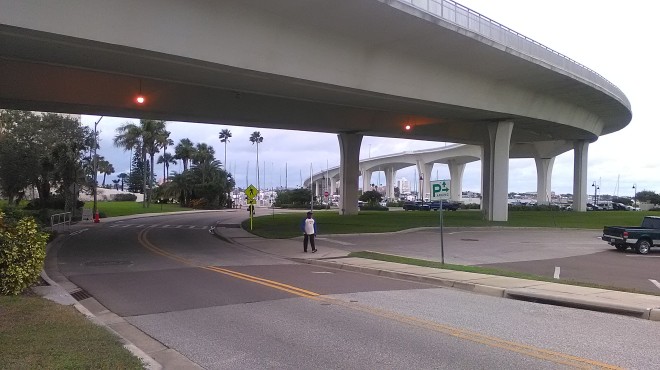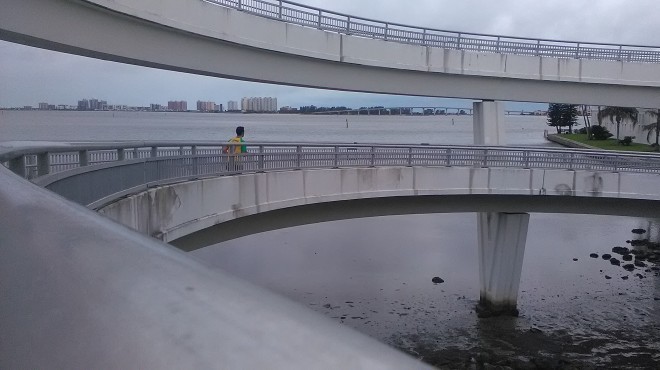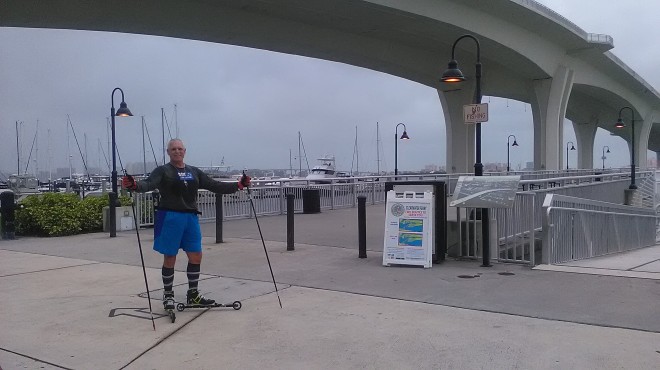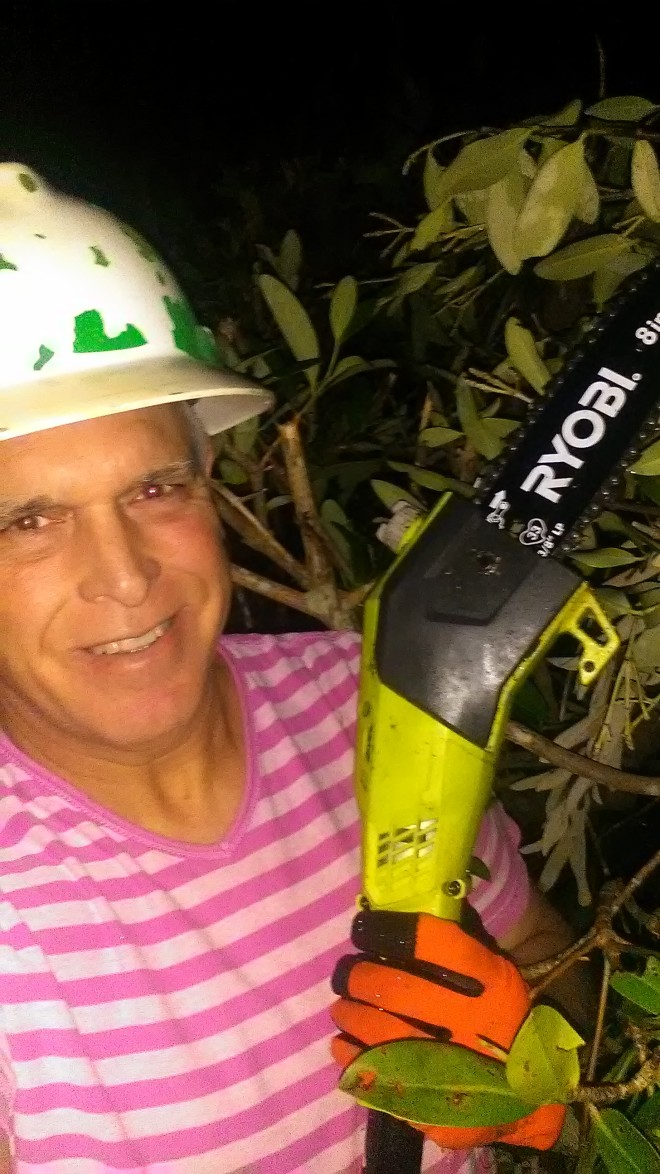with Glossary of Terms
What is the Noquemanon, and why does it need a glossary?
You really need to ask? Yes, we Lower Peninsula natives and other “Southerners” just might benefit from a small ex•pli•ca•tion. I think it will help us “disciples of the good King Gustav Vasa” more thoroughly appreciate the trails we will be skiing and the native peoples who walked them before us (those who perhaps might possibly have peed behind those rocks, just over there…).
The Noquemanon Ski Marathon, the “Noque” is named for the Noquemanon Valley, which its trails explore. Noquemanon Valley is located in Michigan’s Upper Peninsula, between the Zhulkie Range and the Granite Point Escarpment, just west of Marquette and north of Ishpeming and Negaunee. Need the glossary yet? How about a map? [Click here for map!] http://therucksack.tripod.com/MiBSAR/ExtremeMaps/Noque/Index/Noque50kmMap.jpg
The Noquemanon Ski Marathon web site provides this background on the naming of the region, “information that has been passed down over the years”:
Noquemanon Trail Network & Noquemanon Ski Marathon History
In 1998, while searching the area for a ski trail, a survey map dated 1854 was unearthed. The survey map labeled the area, currently known as the Dead River Basin, in the middle of Marquette County, with the word, “Nakemanon”. The original French spelling of the word was identified as Noquemanon. Local historian Fred Rydholm stated in one of his books that the Noque band of the Chippewa Indians used the area as a summer home. The translation of the word “manon” is “berry lands of the tribe”. A local group of forward-thinking ski enthusiasts chose the name “Noquemanon” for the trail network and the signature Ski Marathon event.
[ http://myemail.constantcontact.com/2018-Noquemanon-Ski-Marathon—Our-20th-Anniversary-Year.html?soid=1102552173825&aid=4Vazed1EUWA ]
The “Noque band of the Chippewa,” as Rydholm calls them, shared the same home ground as the “Wild Rice Men,” the Menominee Indians. The Menominee River forms part of the border between the Upper Peninsula and Wisconsin, to the south. It flows into Green Bay just south of Big Bay de Noc and Little Bay de Noc, named for the Noque Tribe. When these “Southern Grounds” became too hot in the summer, The Noque did what we all yearn to do, they traveled Up North. Specifically, they spent the summer in the “berry lands of the tribe,” the Noquemanon Valley.
But what happened to the Noque? Why did they so suddenly vanish from this world? Were they absorbed into the Menomonee or into the Chippewa? The “information that has been passed down over the years” continues:
It so happened at that time that the French Jesuit missionary-explorer Father Jacques Marquette had taken up more or less permanent residence on the most very sacred burial ground of the Noquet tribe, the cape now known as Presque Isle Point at the mouth of the River of the Dead, by the Peninsula for Road to the Land of the Dead. This angered many and some began to talk of expelling the stranger in a less than mannerly fashion to end his defilement of their sacred land. Others spoke of making peace. The oldest woman of the tribe chastened them with this reminder:
What did the First Warrior say to the Great Spirit?
The First Warrior looked out on the land that was his home. He saw the hills and the stars and he was happy. For giving him this home, the First Warrior told the Great Spirit he would fight and win many battles in his honor.
But the Great Spirit said, “No. Do not fight for me. Fight for your tribe. Fight for the family born to you. Fight for the brothers you find. Fight for them,” the Great Spirit said, “for they are your home.”
Longmire, Netflix S2:E8, “The Great Spirit”
But man was growing fat on white fish and perch and the Tribe’s own berries and showed every sign of staying put, and after one whole summer, the patience of the younger men had worn too thin. Parties were sent down the River of the Dead to entice the spirits of their fathers to haunt the island and frighten the intruder away, but the White Man who called himself their Father still did not go.
Calls Himself Your Father said that he had discovered them, but the Noquet bristled at this idea. Their Medicine man, Flip Wilson told anyone who would listen, namely the audience of the Dean Martin Show, “We do not want to be discovered. You cannot discover nobody if they do not want to be discovered. He better discover himself away from here.” [ https://youtu.be/EZTtsKgJDdA ]
After another whole summer, the time had come for action. In the dead of winter, when the White Man’s morale would be at its lowest, a party was formed and the strongest young men, with painted legs and arms and wearing white bibs with black markings traveled down the river by the Peninsula for Road to the Land of the Dead for what would be the last time. What the Spirits of their Fathers could not accomplish would have to be finished by the living.
They set out at the break of day, and arrived at the Land of the Dead just before the setting of the sun. It soon grew dark, and so many stars appeared that they seemed to shine as brightly as the largest moon, though there was no moon that night. This was seen as a sign that the Spirits of their Fathers were with them and approved of their quest. A fire was kindled from the still glowing ember they had brought so carefully from their morning fire. When the fire was large enough for each warrior to hold a burning branch as a torch, they stormed the cape. Each man held a spear in one hand and a burning branch in the other. The noise of their shouts and screaming echoed over the nearby hills, as one by one, the warriors ran into Camp Marquette striking Calls Himself Your Father with the blunt end of his spear and chucking his branch as high into the tree canopy as he could. When finally the last of them had cast his cleansing fire into the beloved trees, the entire isle blazed, sending a column of thick black smoke high into the sky, blocking out the stars. The man who called himself Father (when he realized he was not dead) fled with all his acolytes into the woods, carrying what supplies they could carry.
Though tired from the day’s journey and from the “attack,” the warriors were eager to relay the news of their success to the rest of the Noquet and eager to ask the others if they, too had seen the number of the stars in the sky. The warriors set out at once for home. But along the path, as they crossed the River of the Dead for what would be the very last time, they met another White Man, traveling with two horses and a White squaw, both people dressed and the horses marked as Lakota. The man spoke in broken Lakota, and was hard for them to understand, but the squaw’s tongue was more like their own and they understood her. She told them the man called himself Dances with Wolves, but that his real name was Kevin Costner. She told them that the man had saved a Lakota tribe from destruction at the hands of the White Man’s army and that he was traveling to the Big Water Before the Rising Sun to try to convince the Big White Man to call off the army. She translated many things to them for the Costner and they made camp there by the River of the Dead. And they listened far into the night until they could listen no more and feel asleep.
In the morning, after a breakfast of roasted rabbit had been eaten, the parties exchanged gifts. And at last before the warriors departed for their summer home, they asked Dances with Wolves their most pressing question, “How many white men would be coming?” His answer did not comfort them. He said,
“Like the stars.”
Back home, the warriors learned that the others had indeed seen the number of stars and were much heartened, until they were swallowed by a Great Smoke. Their joy had turned to a deep foreboding, for they feared the mission had ended in disaster. After much council, in order to avoid the White Man’s retribution and to obey the message from the stars, which they now knew they had misconstrued, the Tribe would decided to silence its voice and put out its fire. From that winter on, they were neither seen nor heard from again, not as the Noquet.
I would place this history front and center on the Noquemanon Ski Marathon’s web site, not buried off in a newsletter archive. What makes one trail through the woods more race-worthy than another? Dependable snow, trees, hills, frozen rivers and lakes, panoramic vistas? Yes, but history and lore also draw us in, captivate our imagination and hold us spell-bound as we pound out mile after mile, training through the balmy and sweaty summer, dreaming of a better place, Up North. I commend the “forward-thinking ski enthusiasts” in their choice of names for these trails and this race! Yet so many stories are left untold. So many questions remain unanswered.
Is Zhulkie Pass named after the ancestors of the same Zhulkies that played football for Ishpeming?
Is the Dead River really dead?
Who is Al Quall?
Why is it called Three Steps, when the map shows only two?
My quest for answers, and to find more of my Brothers began with my Nordic ski training earlier this year, and continues with my wave start at the Al Quall Recreation Area in Ishpeming, …
#FindingMyBrothers #TheseAreMyPeople
…And Beyond…
Glossary
Al Quall: “a well known person in the food industry (Albie’s foods Inc.) — he is also a very important person in the ski history of UP skiing! See the Nation Ski Patrol Museum in Ishpeming. He has a whole exhibit there.” [ https://milsap.wordpress.com/current-areas/al-quaal-recreation-area-ishpeming/ ]
Al Quall Recreation Area: An Ishpeming city park, having “3 slopes and 3 tows, a toboggan run, night skiing Tues. and Thu. from 7-9:30, x-c trails and snowmobile trails.” – 1968 AAA Michigan Winter Sports Fun Guide, as published in the Cass City Chronicle, Jan. 4, 1968
[ https://milsap.wordpress.com/current-areas/al-quaal-recreation-area-ishpeming/ ]
Algonquian Tribe: The Algonquian Native Americans are the most extensive and numerous North American groups with hundreds of original tribes speaking several related dialects of the language group, Algonkian. They lived in most of the Canadian territory below the Hudson Bay and between the Atlantic Ocean and the Rocky Mountains. (see also Tribe hierarchy) [ http://www.u-s-history.com/pages/h560.html ]
Bay de Noc, Big/Little: Two smaller bays at the north end of Green Bay, near the mouth of the Menommonee River. [ https://www.bing.com/maps?q=bay+de+noc&FORM=HDRSC4 ]
Chippewa Tribe, aka Ojibwa: name used for a multitude of small, decentralized Native American bands in the Great Lakes and Midwest; “The Chippewa are timber people.” [ https://www.accessgenealogy.com/native/chippewa-tribe.htm ]
Dead River: The name comes from French, Rivière des Morts, River of the Dead; a 43.2-mile-long (69.5 km)[2] river in Marquette County, Michigan.[3] Its watershed is approximately 400 square miles (1,000 km2) in size.[3] The river flows southeasterly from western Marquette County to its mouth on Lake Superior. As of 2003, five dams existed on the river.
Historically, its name is derived from the Ojibwe Gaa-waakwimiigong-neyaashi-ziibi (recorded as “Kah way komi gong nay aw shay Sibi”, meaning “Peninsula by the Roads to the Land of the Dead River”) or Ne-waakwimiinaang (recorded as “Ne ko me non” meaning “by the Peninsula for Road to the Land of the Dead”), both referencing its mouth being near Presque Isle Point, a cape on Lake Superior. Additionally, earlier maps record this river either in French as “Rivière des Morts”, “Rivière du Mort”, or “Rivière au Paresseux”, or in English as “Deadman’s River”. The current name for this river in Ojibwe is either Giiwe-gamigong-neyaashi-ziibi (Return-by-shore Peninsula River) or Niboowaagaming (“At the Death’s Shores”). [ https://en.wikipedia.org/wiki/Dead_River_(Michigan) ]
draw: a terrain feature formed by two parallel ridges or spurs with low ground in between them. The area of low ground itself is the draw, and it is defined by the spurs surrounding it.
[ https://en.wikipedia.org/wiki/Draw_(terrain) ]
escarpment: a long, steep slope, especially one at the edge of a plateau or separating areas of land at different heights. ORIGIN early 19th cent., from French escarpement, escarpe ‘scarp,’ from Italian scarpa ‘slope.’ [Oxford Dictionary]
explication: the process of analyzing and developing an idea or principle in detail [Oxford Dictionary
gen: see gente
gente: [Spanish?] a people;
Ishpeming: small Upper Peninsula Michigan iron ore town situated upon the dividing ridge between the waters of Lake Superior and Lake Michigan and 850 feet above Lake Superior. [from Chippewa – “on the summit”]; school mascot: The Hematites [ https://ishpemingcity.org/ ]
Jesuit: a member of the Society of Jesus (S.J.), a Roman Catholic order of religious men founded by St. Ignatius of Loyola, noted for its educational, missionary, and charitable works; the order grew out of the activity of Ignatius, a Spanish soldier who experienced a religious conversion during a period of convalescence from a wound received in battle. After a period of intense prayer, he composed the Spiritual Exercises, a guidebook to convert the heart and mind to a closer following of Jesus Christ. [ https://www.britannica.com/topic/Jesuits ]
Marquette: Marquette, Michigan, a humble port city on the southern shore of Lake Superior (even the U.P. is South of something). The town of 22,000 is named for Father Jacques Marquette.
Marquette, Jacques, byname Père (Father), or just Jacqie to his friends: 1637-75, French Jesuit missionary-explorer. Marquette founded Christian missions in Sault Ste. Marie and St. Ignace. While the above account of the Noquet Tribe is whimsically anachronistic, it is not a complete fiction. Father Jacques’ travels include several incidents that contribute to its plausibility:
1. He traveled the Great Lakes and preached Chrianity to Native Americans.
2. While looking for new converts in [now] Illinois, he got “caught by the winter, he and two companions camped near the site of the city of Chicago.”
3. While attempting to return to St. Ignace, he died by the mouth of a Michigan river.
[ https://www.britannica.com/biography/Jacques-Marquette ]
Menominee River: Its entire course, with that of its tributary, the Brule River, forms part of the boundary between Wisconsin and Michigan; home grounds of the Menominee Tribe;
Menominee Tribe: Menominee Indians (meno, by change from mino, ‘good’, ‘beneficent’; min, a ‘grain’, ‘seed’, the Chippewa name of the wild rice. Hewitt. Full name Menominiwok ininiwok, the latter term signifying ‘they are men’). An Algonquian tribe, the members of which, according to Dr William Jones, claim to understand Sauk, Fox, and Kickapoo far more easily than they do Chippewa, Ottawa, and Potawatomi, hence it is possible that their linguistic relation is near to the former group of Algonquians. Grignon speaks of the Noquet as a part of the Menominee, and states that “the earliest locality of the Menominee, at the first visits of the whites, was at Bay de Noque and Menominee river, and those at Bay de Noque were called by the early French Des Noques or Des Noquia.” (See Noquet.) The Jesuit Relation for 1671 includes the Menominee among the tribes driven from their country-that is, “the lands of the south next to Michilimackinac,” which is the locality where the Noquet lived when they first became known to the French. It is generally believed that the Noquet, who disappeared from history at a comparatively early date, were closely related to the Chippewa and were incorporated into their tribes; nevertheless, the name Menominee must have been adopted after the latter reached their historic seat; it is possible they were previously known as Noquet. Charlevoix says: “I have been assured that they had the same original and nearly the same languages with the Noquet and the Indians at the Falls.” [ https://www.accessgenealogy.com/native/menominee-tribe.htm ]
Michigan: “It is common knowledge that the state of Michigan is named for Lake Michigan, which forms the western sore of the Lower Peninsula and the southern shore of the Upper Peninsula. The name is a modification of the words for “big lake” in Ojibwa and other Algonquian languages. The name is, in fact, a generic designation for any very large lake and was applied by one or more tribes, in one form or another, to all of the five Great Lakes.” – Indian Names in Michigan, by Virgil J Vogel, U. of M., 1986
Negaunee: a small iron ore town (pop. 4,500) just east of Ishpeming. #BitterRivals; Ojibwa, from nigani, meaning “foremost, in advance, leading,” which was determined to be the closest Ojibwa translation for “pioneer”; school mascot: the Miners; [ https://en.wikipedia.org/wiki/Negaunee,_Michigan ]
Noque: See Noquet Tribe
Noquet Tribe: 1. Noquet Indians (No´ke, ‘bear foot’; another name for the Bear gens (see Noka) of the Chippewa. W. J.) An Algonquian tribe located by the earliest French writers about Noquet bay, at the mouth of Green Bay, extending north across the peninsula to Lake Superior. [ https://www.accessgenealogy.com/native/noquet-tribe.htm ]
____
2. On September 28, 1698, the Jesuit missionary Jean Francois Buisson de St. Cosme wrote that upon approaching “The Bay of the Puants” (Green Bay), “one passes on the right hand another small bay called that of the Noquest. The Bay of the Puants is inhabited by several savage tribes: the Noquest, the Folles Avoine [Wild Oat, Menominee], the Renards [Foxes], the Poutouatamis, and the Saki.” In 1775 Jonathan Carver wrote that on the northwest part of Lake Michigan the waters branched into two bays, called Bay of Noquets and Green bay.
The Noquet had been reported earlier on the shores of Lake Superior. They have not been positively identified, and ti is believed that they were adopted by the Ojibwa or the Menominee. There name is held to mean “bear foot,” another name for the bear gens of the Ojibwa. Today Noquet has been shortened to Noc and appears in the names of Big Bay de Noc and Little Bay de Noc, as well as Bay do Noc Township, Delta County.
– Indian Names in Michigan, by Virgil J Vogel, U. of M., 1986 [ https://books.google.com/books?id=T5d5wS7so14C&pg=PA11&lpg=PA11&dq=father+jacques+marquette+noquet&source=bl&ots=VeI9z-Snry&sig=xie9FLA-RP0eCID4JYTT0LF7ke8&hl=en&sa=X&ved=0ahUKEwj6wf7R8trXAhUm3YMKHeoGCzcQ6AEITjAK#v=onepage&q=father%20jacques%20marquette%20noquet&f=false ]
____
3. Meaning probably “bear foot,” another name for the Bear gens in Chippewa. The Bear gens may have been prominent in this tribe.
Connections. The Noquet are thought to have been related to the Menominee of the Algonquian linguistic family.
Location. About Big Bay de Noquet and Little Bay de Noquet and extending across the northern peninsula of Michigan to Lake Superior. (See also Wisconsin.)
History. In 1659 the Noquet was one of the tribes attached the St. Michel. They were never ever prominent and were probably absorbed at a very early date by Menominee or Chippewa.
Population. Unknown. noted.
Connection in which they have become noted. The name Noqute is perpetuated in the two bays above mentioned.
[ https://www.accessgenealogy.com/native/michigan-indian-tribes.htm ]
Noquemanon Trail: ‘The Noquemanon trail has been described by some as “the most beautiful trail I have ever skied on,” by others as “never dull,” and by a few as “deceptively tough.”’ [ http://www.noquemanon.com/course/ ] [ http://www.noquetrails.org/ ]
Ojibwa: alternate name of the Chippewa tribe;
Tribe hierarchy
For the limited scope of this glossary, here is a hierarchy of tribes listed here [*see note at Ethnology/Ethnography of Tribe Names]:
Algonquian
–Northern division
—-Chippewa
——Noquet
–Central division
—-Menominee
[ https://www.accessgenealogy.com/native/algonquian-indians.htm ]
Tribe Names, Ethnology/Ethnography of: [I am not an ethnologist nor a historian, but I thought this introduction from accessgenealogy.com was revealing of the types of misconceptions we White Men, with our Systems of Categorization, might have regarding Native Americans.]
Lack of knowledge of the aborigines and of their languages led to many curious errors on the part of the early explorers and settlers: names were applied to the Indians that had no relation whatever to their aboriginal names; sometimes nicknames were bestowed, owing perhaps to personal characteristics, fancied or real; sometimes tribes came to be known by names given by other tribes, which were often opprobrious; frequently the designation by which a tribal group was known to itself was employed, and as such names are oftentimes unpronounceable by alien tongues and unrepresentable by civilized alphabets, the result was a sorry corruption, varying according as the sounds were impressed on Spanish, English, French, Dutch, German, Russian, or Swedish ears.
[ https://www.accessgenealogy.com/native/handbook-of-american-indians-north-of-mexico.htm ]
Vasa, Gustav: first King of Sweden and namesake of the grandest cross country ski race in the world, VasaLoppet. Vasa escaped the Danish king’s pursuing soldiers in a heroic way on skis. See the rest of the story here: [ http://www.vasaloppet.se/en/about-us/history/ ] [This page is linked to from site’s home page, indicating the proper importance placed on the Mother Race’s history and lore.]
Zhulkie: ?
Zhulkie Creek: Noquemanon Trail (map section 2, between aid stations 1 and 2) [ http://therucksack.tripod.com/MiBSAR/ExtremeMaps/Noque/Section2/Section2Map.htm ]
Zhulkie Pass: a draw 9 km into the 50 km Noquemanon Trail (map section 2, between aid stations 1 and 2) elevation 1561 feet, leading through the Zhulkie Range [ http://therucksack.tripod.com/MiBSAR/ExtremeMaps/Noque/Section2/Section2Map.htm ]
Zhulkie Range: a group of high hills on the Noquemanon Trail (map section 2, between aid stations 1 and 2) [ http://therucksack.tripod.com/MiBSAR/ExtremeMaps/Noque/Section2/Section2Map.htm ]










 Moonless night skiing around the neighborhood.
Moonless night skiing around the neighborhood. My skiing distances have lessened the last few days, as I began turning my attention to some other targets that need completing before my North American Vasa trip to Traverse City. Namely, I have begun the annual task of trimming the mangroves to preserve our water view. My new little 8″ cordless 18v lithium battery powered chainsaw “on a stick” has proven to be just the tool for the job. The battery lasts only 12-18 minutes, but that keeps me out of the mangroves for extended periods, which is good for mo·rale.
My skiing distances have lessened the last few days, as I began turning my attention to some other targets that need completing before my North American Vasa trip to Traverse City. Namely, I have begun the annual task of trimming the mangroves to preserve our water view. My new little 8″ cordless 18v lithium battery powered chainsaw “on a stick” has proven to be just the tool for the job. The battery lasts only 12-18 minutes, but that keeps me out of the mangroves for extended periods, which is good for mo·rale.